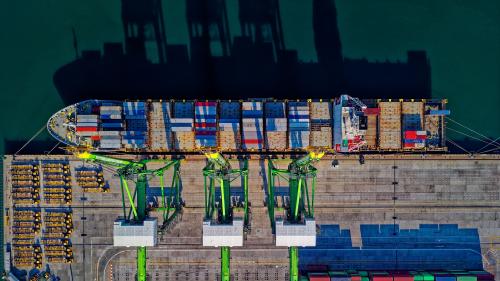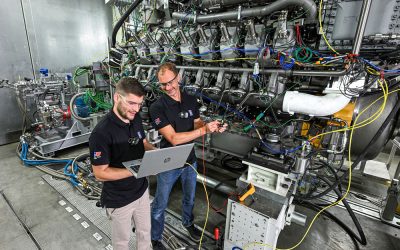CSSC Huangpu Wenchong Shipbuilding Co., Ltd., a subsidiary of China Shipbuilding Group Co., Ltd., (CSSC) has been tasked with the challenge of building such a digital dock system.
Recently, using accuracy analysis software monitoring, a 120,000tonne bulk carrier and 2,700TEU container ship from Huangpu Wenchong successively completed in-dock mooring to industry standard accuracy, greatly improving operational efficiency.
This successful debut of the digital dock shows that the system is both reliable and advanced; a bridge has been established between the of 100,000tonne dock produced in the real world and the digital system in virtual data.
Chief operator Dai Xiaoming, of Huangpu Wenchong Shipbuilding Loading Department’s third division support operation zone, is the lead planner for this technology. “Have you ever played computer games? The running movement of characters in the game is actually a series of changes to 3D coordinates. The same is true of digital docks,” he explains.
The dock’s 3D coordinate system is formed in the virtual system through permanent coordinates set at the dock side, establishing a digital dock. Then, through several measurement and control points set up at dockside, a real-time 3D measurement and control network is established. This is equivalent to installing a 3D scale on the dock, which can collect the 3D coordinates of the dock’s sub (total) sections at any time, and all data can be obtained by one measurement.
Thus, the dock’s 3D coordinate system and the corresponding coordinate system of the ship’s 3D design model are unified. Through the comparison between the pre-set coordinate points and the actual coordinate points, rapid positioning, comparisons and adjustments can be realised, and the ship is loaded in sections like building blocks.
According to reports, the digital dock system actually draws inspiration from China’s high-speed railway tunnel control network. Across China’s complex terrain and diverse landform, the construction of high-speed railway tunnels overcame several obstacles; ship structure and sectional cabin layout are equally complex.
Through the establishment of a 3D measurement and control network of the dock, the dock’s digital coordinate system is formed. Hence the ship loading survey can be taken with unified coordinates, which avoids cumulative errors caused by the inconsistency of measurement base points and improves positioning accuracy.
“Today’s digital dock is not ‘complete’,” Xiaoming says, adding that: “When characters are in a game, their movement data is automatically displayed. The next step for the digital dock will also be to develop automatic tracking.”
There are plans to set up automatic sensory light targets on the sections, and realise automatic real-time display of entire section coordinates through cooperative operation of multiple devices and real-time data transmission via 5G communication. Through the comparison between the dock 3D coordinate system and the ship design’s 3D model coordinate system, the sub (total) section loading is faster, more accurate and can even make some loading processes that were impossible to use in the past become a reality. The fact that the 3D measuring of all data can be obtained in one measurement also greatly reduces the workload relating to ship loading data measurements.
When the data is imported into the system, no matter whether you are the designers in the design centre, the managers in the office, or even the project leaders on business trips, with handheld terminals – mobile phones and computers – you can get instant information at any time, and can know the real-time and accurate production trends in the dock at any time, and guide, adjust and manage them at any time.
A version of this article was originally published in the Chinese publication ‘Ship Economy & Trade’




